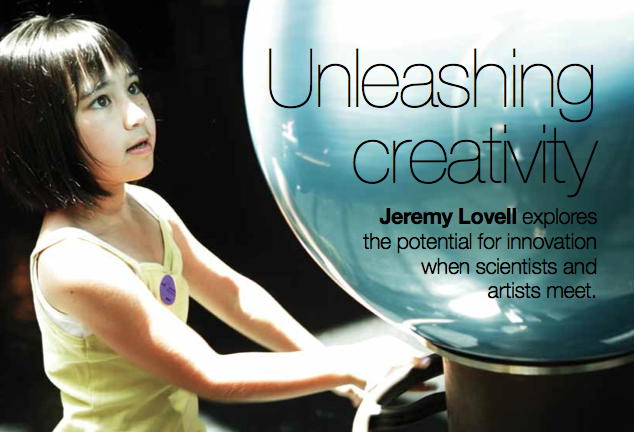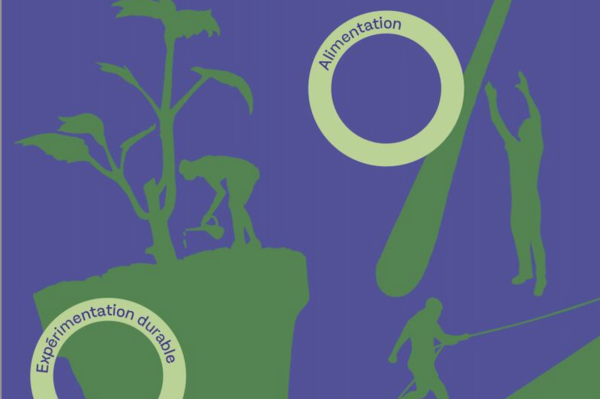
Le catalogue photo officiel de la biennale Photoclimat
Le catalogue officiel reprend la centaine de photos exposées, commentées par leurs auteurs, et présente les associations et ONG impliquées dans…

In all probability, artists and scientists share a common wellspring of creativity and then put it to use in radically different ways. But tear down the silos society has built for them and the result can be a creative explosion from which we can all benefit, new research is showing.
Scientists have tended to be categorised by observers as analytical left-brainers, and artists as creative right-brainers, with the two sides seen to share little common ground and to have little to learn from each other. The fact that over the centuries there have been so few outstanding examples of people who have clearly been both – such as Leonardo da Vinci and Benjamin Franklin – is taken as validation of the distinct nature of each discipline. But the view that the two are therefore incompatible is coming under increasing challenge.
“Scientific and artistic creativity probably does come from the same well and they then move in quite different cultures and get quite different training. But their interest in ideas and exploring those ideas comes from the same place”, argues Clare Matterson, Director of Medical Humanities and Engagement at the Wellcome Trust. She observes that “when there is deep collaboration between scientists and artists, there is quite a profound effect on the scientists in terms of how they think about their work. They stand back and think about it in more conceptual terms than the very specific terms in which scientists are often trained”.
Matterson cites the interaction between the neuropsychologist Martin Conway and installation artist Shona Illingworth. They have worked together for the past decade, a collaboration Conway says has changed the way he conceptualises his work around memory encoding and retrieval. In ‘The Watch Man’, for instance, they explored the conflict between trauma memory and the need for a coherent ‘life story’, illustrated through the experience of an 80-year-old watchmaker and war veteran.
The interaction between artists and scientists is by no means a one-way street. Such encounters also open up new vistas for the artists, giving them greater understanding of the mechanics of the world around them.
Sculptor David Buckland’s Cape Farewell is an international non-profit that works in partnership with scientific and cultural institutions to challenge audiences to think differently about our relationships to each other and to the natural world. It has been bringing artists and scientists together for many years and taking them on voyages of discovery. It was one such trip to Spitsbergen in 2005 that inspired author Ian McEwan’s 2010 novel Solar.
For Alison Tickell of Julie’s Bicycle – an organisation which works with arts and cultural organisations to bridge the gap between art and environmental sustainability – the value of such interactions is to take both out of the comfort zone of an established discipline. The result of one of these initiatives is that the creative industries – music, theatre and visual arts – are now able to calculate and act on reducing their carbon footprint, and that exchange between culture and science is an interesting one.
And it is not the only gain. With scientists increasingly (and, in many cases, evidently uncomfortably) in the spotlight on issues as diverse as climate change and health, the need to engage with the public has never been more evident. That, according to Tickell, is where the artist also comes in.
“The creative sector deals with complexity in a way that science just does not. Complexity is often so poorly handled. We have seen that so clearly around issues like climate change. Artists are so much better at handling and communicating nuance”, she says.
Despite professional rivalries and jealousies, science is fundamentally a collaborative process, with scientists drawing on and acknowledging the work of others to reinforce and further their own efforts. Their work has no status without peer review. But while they are comfortable engaging with their own kind, they are often far less happy or able to communicate to a wider audience.
By contrast, artists tend to work on a far more individual basis – but as the public is their customer they have to be much more focused on communication than simply connecting with their peers.
As the 19th-century French physiologist Claude Bernard succinctly put it: “Art is I. Science is we.”
Artifact, a collaboration now in its fourth year between scientists at London’s Imperial College and artists and designers at the neighbouring Royal College of Art, is putting the two disciplines together to explore this area.
“With increasing emphasis on the need for scientists to engage publicly to explain their research, Artifact is proving quite a valuable outlet for them to start thinking more about how they might start communicating their research and the broader social impacts of it”, says project leader Meredith Thomas. “That is something that artists and designers are very good at picking out.”
“Artists are used to looking at social impacts, projecting into the future and looking at the wider social implications. That is something that scientists don’t do so well. They don’t have those conversations as frequently”, he adds.
In unwitting illustration of the communication gulf, when asked to put forward someone to talk about the science-art interaction, the Royal Society, the country’s foremost scientific body, said it was far too busy.
For Clare Brass, Head of the Royal College’s SustainRCA programme, while scientists occupy one end of the creative spectrum and artists the other, designers are where the two meet most effectively and to practical effect – taking the scientific and technological advances from the laboratory and applying to them the artistic visions of the future to create a practical outcome.
“Because designers are all about deeply understanding other people who aren’t them, they acquire insights into what makes people tick”, she says. “Designers bridge the gap between scientific concept and artistic abstract, bringing both to conception.”
She offers the example of design student Mauricio Affonso, who has chosen the humble loofah – mostly put to practical use as a bath-time back scrubber but found by science to have some other seriously useful properties – to create a vision of the future. Not only does the loofah possess antibacterial properties, and is strong, light, a good insulator, absorbent, and can be ground to make paper or shaped when wet into other forms, but it also grows like a weed in Affonso’s native Brazil, so might also prove a useful source of income for smallholders.
“Scientists are seeking knowledge for its own sake, not necessarily applying it. Designers take that knowledge, imagine its possible uses and set about creating it”, Brass said. “Scientists are good at finding solutions to existing problems. Designers and artists are good at foreseeing and approaching forthcoming problems.”
“Technology on its own is not going to save us. But the application of technology to build a new and a different future is a great way of going forward. That is what designers do”, says Brass.
Jim Dawton, Designer and Director of Great Fridays, sees designers as well placed to lead by turning their visions into reality.
“If you do not create a solution, you will never find the solution. To some extent with art you create something and then you manipulate it, experiment with it and then you get the final solution. There is a component where design does the same thing”, he said.
“The artist is the expert, whereas – in today’s conventions – the designer is seen to be the facilitator and the customer the expert. I think the designer needs to step up and re-establish themselves as the expert”, he added.
For some, designers are the embodiment of the interface between art and science. For others, the value is not in integrating the two disciplines but creating contexts where they can spark off each other. Ken Arnold, Head of Public Programmes at the Wellcome Trust, believes art and science need each other, and the world needs them in turn to work together, if we are to create a sustainable future by applying vision to knowledge.
“If art and science can’t do it, we might as well give up really”, he says.
Jeremy Lovell is a freelance writer specialising in energy, environment and climate change issues.
Source Green Futures (April 2014)
Le catalogue officiel reprend la centaine de photos exposées, commentées par leurs auteurs, et présente les associations et ONG impliquées dans…
Grâce à cette revue, découvrez les tiers-lieux, ces espaces qui forment un autre visage de la France qui innove, en…
Cette monographie permet de découvrir une vision globale du travail plastique de Thomas Lévy-Lasne et plus largement de sa place…

